Song. When Spanich and Palestinian music collide. Canción Fusión española-palestina. Tenez Sliman Sofía Adriana ENG ESP
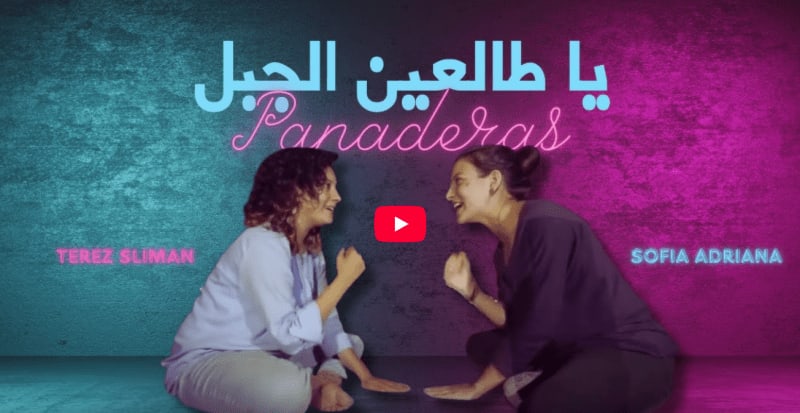
Youtube ريز سليمان - يا طالعين الجبل || صوفيا - باناديرا (الخبازة) || Panadera
Dana Salah. Ya Tal3een (full version) يا طالعين
Resistance and the Palestinian Folk Song’
April 5, 2024
By Shaimaa Abulebda
It was last year when a short video posted to Palestinian singer-songwriter Terez Sliman’s Facebook page went viral. The video features Sliman and Portuguese musician Sofia Adriana Portugal on a boat, cruising the Nile River in Egypt. They sit atop a table, facing one another as they tap rhythmically while singing “Ya Talei’en El Jabal” (Hey, You, Climbing Up the Mountain) and “Las Panaderas” (Women Bakers).
Within a matter of days, the Arabic-Spanish folksong fusion had spread across different social media platforms, both in Arabic and in Spanish.
The two songs were released in 2015, as a part of a collaboration that features Palestinian and Portuguese musicians called “Mina World Music,” evoking not only the Arabic word for “port” but also the Portuguese for “mine.” The project “excavates the land of memory, inspires beauty from it, and sails towards a new port.”
Yet Sliman was not the first female musician to revive “Ya Talei’en El Jabal.”
In 1993, Palestinian singer-composer Rim Banna (1966-2018) released her album al-Holm (The Dream), which brought together seven Palestinian poems, two Palestinian lullabies, and one Palestinian folk song—Ya Tala’een.[1] Banna was first to bring this song to a wide contemporary audience. But before this, Banna had long been involved in the folk-music revival. By the time she released al-Holm, she had already established a reputation for crafting modern interpretations of traditional Palestinian poems, folk songs, and lullabies.
A quarter century later, the folk song received fresh attention from Reem Kelani, a Palestinian singer-songwriter whose album Lima Uhibbuha? (Why Do I Love Her?) was released to critical acclaim in 2018. This album of traditional Palestinian folk songs also included a rendition of “Ya Taali’een ‘ala el-Jabal.” Kelani dedicated the song to the memory of Banna, who had died earlier that year.
The origins of ‘Ya Tala’ayn El-Jabal’
Palestinian folk songs address a wide range of themes and topics, from the religious to the romantic, the festive to the revolutionary. The well-loved “Ya Tala’ayn El-Jabal” is a patriotic song, rooted in the resistance movement.
Researchers believe ‘Ya Tala’ayn’ first came into being in the north of Palestine, in the Galilee. Like most traditional songs, the song has more than one origin story. But here, the stories disagree only about the date of its composition. Some Palestinian folklorists and researchers believe the song dates back to the British Mandate period (1918-1948) while others think it dates back to the end of Ottoman rule over historic Palestine. Because of the recurrent use of the Turkish word “aamaan” (an exclamation like “oh my!”), Reem Kelani has said she leans towards the Ottoman origin story.
“Ya Tala’ayn El-Jabal” is a call for resistance and freedom that was sung by Palestinian women as they went up the mountain on their way to visit men who were held captive. The women would stand around the prison walls, and from there they would call to the prisoners and begin singing to them. While singing, they would play around with the lyrics, concealing their messages by adding “lelele” between words. This style of singing is known as al-malwa’lala, or lmlolaah, an onomatopoeic word taken from the L sound, followed by a vowel that was repeated to encrypt a message. In this way, the jailers would struggle to understand the subversive messages the women conveyed.
The use of “lelele” between words—tongue trills and repetitive fillers—was a way to send coded messages, usually suggesting that the prisoners’ incarceration would not last long, and that the freedom fighters and fida’is planned to free them that same night. This type of encrypted message through wordplay was not unique to songs of resistance; it was also used by inhabitants of the countryside to alert neighbors about robbery attempts.
It is worth noting that the three aforementioned performers are all women, much like those who originally composed and sang the song.
This should come as no surprise, as women were often the bearers of military secrets. During the British Mandate period, particularly the 1930s-40s, women were the ones who supplied food, drinks, and weapons to fighters. They also carried secret messages and hid fighters from the British army.
Performing the Palestinian folk song
Folk songs are a spontaneous creation, assembled by people to express their feelings, beliefs, and challenges: a collective form of poetry and music. This includes “Ya Tala’ayn El-Jabal,” which is sung in a Palestinian colloquial dialect popular in Galilee.
The interest in researching Palestinian folk songs, such as “Ya Tala’ayn El-Jabal,” has itself gone through several changes, marked by major historic events. According to Sharif Kanaana[2], the interest in collecting and sharing Palestinian popular traditions witnessed has four important periods.
The first is the so-called Orientalism period (1850-1930), when the European Orientalists collected a large amount of material on Palestinian heritage, as they did elsewhere in the “Orient.”
The second period extended from the years following the first World War until the end of the 1948 war, or the Nakba. This is when Palestinian researchers joined the British Orientalists.
The third period was from 1948 to 1967, from the Nakba to the Naksa, and this period witnessed the resurgence of Arab nationalism. During this period, many organizations that focused on the Palestinian popular heritage were established.
The fourth period began after the 1967 war and continues until the present day.
Indeed, I see the 1967 war as a crucial point in the development of the Palestinian folkloric movement. Palestinian researchers paid much more attention to folkloric studies after the 1967 war, in an attempt to preserve the culture of the land through its popular art and traditions.
Throughout all these periods, women have played a vital role in preserving folk songs. They still sing them on different occasions, especially during wedding ceremonies. Most of the popular Palestinian singers who have brought back traditional songs have been women, including: Rim Banna, Reem Kelani, Terez Sliman, Dalal Abu Amneh, Sanaa Moussa, and Reem Talhami. The men’s role in reviving Palestinian folk song, it seems, has mostly focused on dance and theatre performances, as they form bands and dance dabke.
While many songs emerged from oral traditions, folk songs are distinguished by their total reliance on oral transmission, as they were not written down at the time of their composition. In fact, committing folk songs to paper only became standard practice when folklorists began researching and studying them to protect this heritage from being lost. And while Palestinian folk songs co-existed with a literate Palestinian culture, a large segment of the population could not write. Thus, they did not preserve the lyrics to the songs they created.
For this reason, there are different versions of the same songs, since singers and performers relied on their memories. And the more often a song was repeated, the more variations arose. Singers improvised their materials, leading to even more variants.
Cultural identity and folk songs
In the last two centuries, folk songs have formed a large part of collective identity and memory in Palestinian culture. This remains true in modern times, as Palestinians continue to defend their very existence against the Israeli occupation. The folk songs depict various dimensions of society, and have been formed for every occasion and event.
Many such folk songs have become embedded in the realities of the daily life, accompanying different Palestinian rituals and activities until they themselves became their own rituals. An example of this is the folk songs celebrating the arrival of new seasons, such as olive-picking season, which has become an integral part of the Palestinian culture. They remain deeply embedded today. Recently, Palestinian singer, producer, and neuroscientist Dalal Abu Amneh posted a video of herself celebrating the olive season by singing “Ad-Dal’ouna” with her gathering of family and friends as they harvested olives.
In her book on the popular arts in Palestine, Al-Funoon as-Sha’biyya Fi Filasteen (Popular Art in Palestine), Yusra Jawhariyyeh Arnita provides an extensive account of the emergence of folk songs. She writes that the, “Popular songs among all nations emerge from the same origin, with joint themes reflecting the environment, the psychological state, and the traditions.”[3] She goes on to describe them as intuitive, unpretentious songs. They are sung by unidentified people and are passed down from one generation to the next. These folk songs are distinguished by their clear images of rituals, traditions, and superstitions.
Folk songs and resistance
One of the most important functions of folklore is its role as a medium for social protest. Victims of oppression and injustice may turn to folklore for some solace, using folk songs as a form of collective expression.
The oral history of the Palestinian heritage is rich in resistance-inspired folk songs that were composed through the many invasions and occupations throughout Palestine’s history. For Palestinians, folk songs continue to be a defiant expression of resistance, one that effectively proves their existence in Palestine and solidifies their roots. Even folk songs that were not considered patriotic before the Israeli occupation have since taken on a different meaning, inspiring revolutionary fervor. Even if they don’t directly express a desire for justice, they express Palestinians’ ongoing attachment to place, as well as a sense of collective belonging.
Hey, you, climbing up the mountain. Hey, you, setting the fire
Between night and dawn, my soul
Neither do I want a robe of honor nor clothes
Between night and dawn, my soul
Neither do I want a robe of honor nor a sash
Between night and dawn, my soul
Except the gazelle (fidai’s) who are coming for the jailed
Between night and dawn, my soul
Except the gazelle (fidai’s) who are coming to free you
[1] The different transcription of the name of the song in this article is due to the different transcriptions the singers used.
[2] Sharif Kanaana, Ad-Dar Dar Abuna:Dirasat fi at-Turath as-Sha’bi al-Filistini, (Ramallah: Dar Alshorok, 2013). 2nd Edition. Pp. 37-45.
[3] Yosra Jawhariyyeh Arnita, Al-Funoon as-Sha’biyya Fi Filasteen, (Beirut: Palestine Research Centre, 1968).
ESPAÑOL
Resistencia y la canción popular palestina
5 de abril de 2024 Por Shaimaa Abulebda
El año pasado, un breve video publicado en la página de Facebook de la cantautora palestina Terez Sliman se volvió viral. El video muestra a Sliman y a la música portuguesa Sofia Adriana Portugal en un barco, navegando por el río Nilo en Egipto.
Sentadas sobre una mesa, una frente a la otra, dan golpecitos rítmicos al ritmo de “Ya Talei’en El Jabal” (Eh, tú, subiendo la montaña) y “Las Panaderas”.
En cuestión de días, la fusión de canciones populares árabe-españolas se había extendido por diferentes plataformas de redes sociales, tanto en árabe como en español. Ambas canciones se lanzaron en 2015, como parte de una colaboración entre músicos palestinos y portugueses llamada “Mina World Music”, que evoca no solo la palabra árabe para “puerto”, sino también la palabra portuguesa para “mina”.
El proyecto “excava la tierra de la memoria, la embellece y navega hacia un nuevo puerto”. Sin embargo, Sliman no fue la primera música en revivir “Ya Talei’en El Jabal”.
En 1993, la cantautora palestina Rim Banna (1966-2018) lanzó su álbum al-Holm (El Sueño), que reunía siete poemas palestinos, dos canciones de cuna palestinas y una canción folclórica palestina: Ya Tala’een.[1] Banna fue la primera en acercar esta canción a un amplio público contemporáneo.
Pero antes de esto, Banna llevaba mucho tiempo involucrada en el resurgimiento de la música folclórica. Para cuando lanzó al-Holm, ya se había labrado una reputación por crear interpretaciones modernas de poemas, canciones folclóricas y canciones de cuna tradicionales palestinas. Un cuarto de siglo después, la canción folclórica recibió una renovada atención de la mano de Reem Kelani, cantautora palestina cuyo álbum Lima Uhibbuha? (¿Por qué la amo?) se lanzó con gran éxito de crítica en 2018.
Este álbum de canciones folclóricas tradicionales palestinas también incluía una versión de “Ya Taali’een ‘ala el-Jabal”. Kelani dedicó la canción a la memoria de Banna, quien falleció ese mismo año. Los orígenes de «Ya Tala’ayn El-Jabal»
Las canciones populares palestinas abordan una amplia gama de temas, desde lo religioso hasta lo romántico, desde lo festivo hasta lo revolucionario.
La muy querida «Ya Tala’ayn El-Jabal» es una canción patriótica, arraigada en el movimiento de resistencia. Los investigadores creen que «Ya Tala’ayn» surgió en el norte de Palestina, en Galilea. Como la mayoría de las canciones tradicionales, la canción tiene más de una historia de origen. Sin embargo, en este caso, las historias solo discrepan en cuanto a la fecha de su composición. Algunos folcloristas e investigadores palestinos creen que la canción se remonta al período del Mandato Británico (1918-1948), mientras que otros piensan que se remonta al final del dominio otomano sobre la Palestina histórica.
Debido al uso recurrente de la palabra turca «aamaan» (una exclamación como «¡Dios mío!»), Reem Kelani se inclina por la historia de origen otomano.
“Ya Tala’ayn El-Jabal” es un llamado a la resistencia y la libertad que cantaban las mujeres palestinas mientras subían la montaña para visitar a los hombres cautivos.
Las mujeres se situaban junto a los muros de la prisión y, desde allí, llamaban a los prisioneros y comenzaban a cantarles. Mientras cantaban, jugaban con la letra, ocultando sus mensajes añadiendo "lelele" entre las palabras. Este estilo de canto se conoce como al-malwa’lala o lmlolaah, una palabra onomatopéyica derivada del sonido L, seguida de una vocal que se repetía para cifrar el mensaje. De esta manera, a los carceleros les costaba comprender los mensajes subversivos que transmitían las mujeres.
El uso de "lelele" entre palabras (trinos linguales y muletillas repetitivas) era una forma de enviar mensajes en clave, generalmente sugiriendo que el encarcelamiento de los prisioneros no duraría mucho y que los luchadores por la libertad y los fida’is planeaban liberarlos esa misma noche. Este tipo de mensaje cifrado mediante juegos de palabras no era exclusivo de las canciones de resistencia; también lo utilizaban los habitantes del campo para alertar a los vecinos sobre intentos de robo.
Cabe destacar que las tres intérpretes mencionadas son mujeres, al igual que quienes compusieron e interpretaron la canción originalmente. Esto no debería sorprender, ya que las mujeres solían ser las portadoras de secretos militares.
Durante el Mandato Británico, en particular en las décadas de 1930 y 1940, las mujeres eran quienes suministraban comida, bebida y armas a los combatientes. También portaban mensajes secretos y ocultaban a los combatientes del ejército británico.
Interpretando la canción popular palestina
Las canciones populares son una creación espontánea, creada por la gente para expresar sus sentimientos, creencias y desafíos: una forma colectiva de poesía y música. Esto incluye "Ya Tala'ayn El-Jabal", que se canta en un dialecto coloquial palestino popular en Galilea. El interés por investigar las canciones populares palestinas, como "Ya Tala'ayn El-Jabal", ha experimentado varios cambios, marcados por importantes acontecimientos históricos.
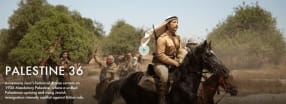
"Palestine 36". Film. Pelicula. Directed by Annemarie Jacir ENG ESP
Publicado hace 4 días.
'Palestina, la existencia negada' Ensayo. Teresa Araguren
Publicado hace 5 días.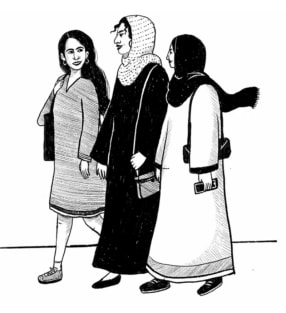
Rama Duwaji. Syriam cartoonists. Dibujante siria. ENG ESP
Publicado hace 8 días.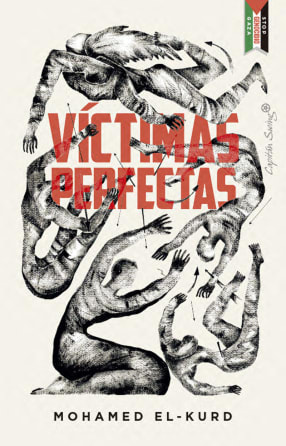
"Víctimas perfectas". Ensayo. Mohamed El-Kurd
Publicado hace 12 días.
Gaza 'scholasticide'. "Escolicidio" en Gaza ENG ESP
Publicado el 27 de octubre.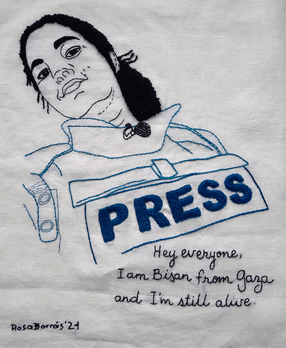
Videos “It’s Bisan from Gaza and I’m Still Alive”. "Soy Bisan, desde Gaza, y sigo viva". ENG ESP
Publicado el 21 de octubre.
Pictures. C-section post-morten: Israel murdered his mother, father and three brothers. Fotografías. Cesárea postmorten: Israel asesinó a su madres, su padre y sus tres hermanos. ENG ESP
Publicado el 20 de octubre.
2 Nov 2025. Balfour Declaration. Cinema Day. Día de cine palestino, 2 nov 2025. ENG ESP
Publicado el 14 de octubre.Ver más / See more


